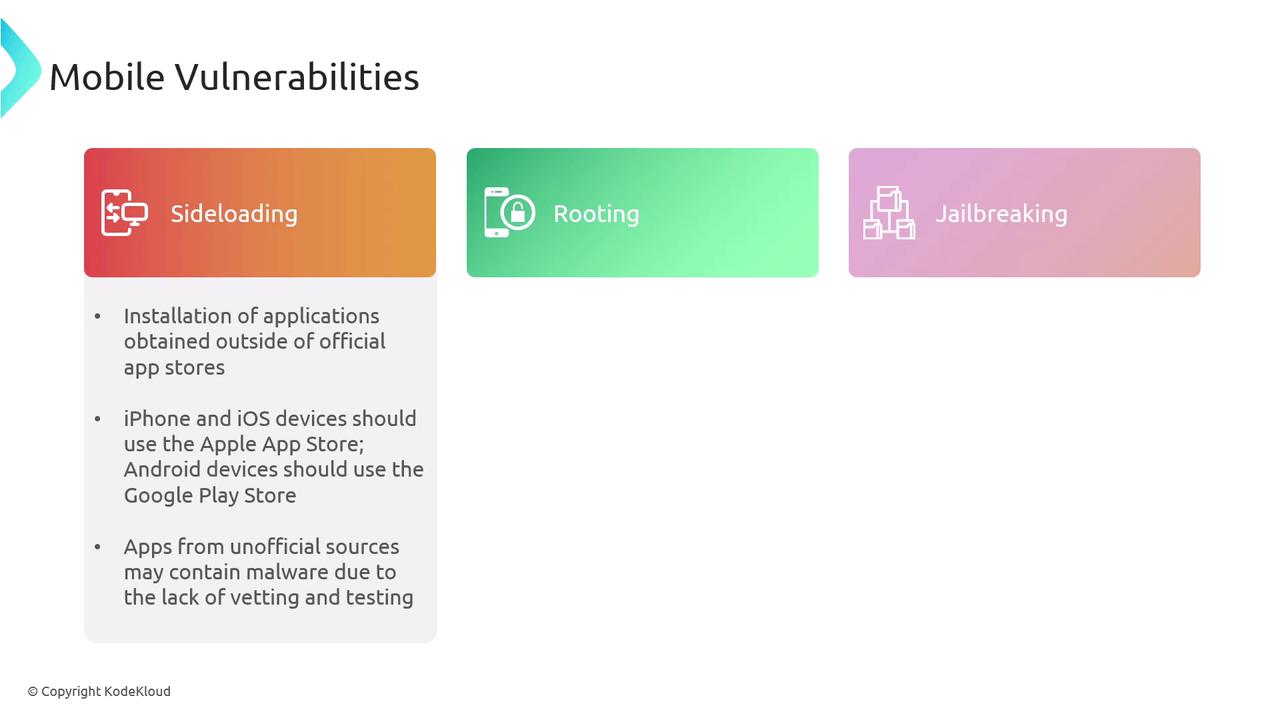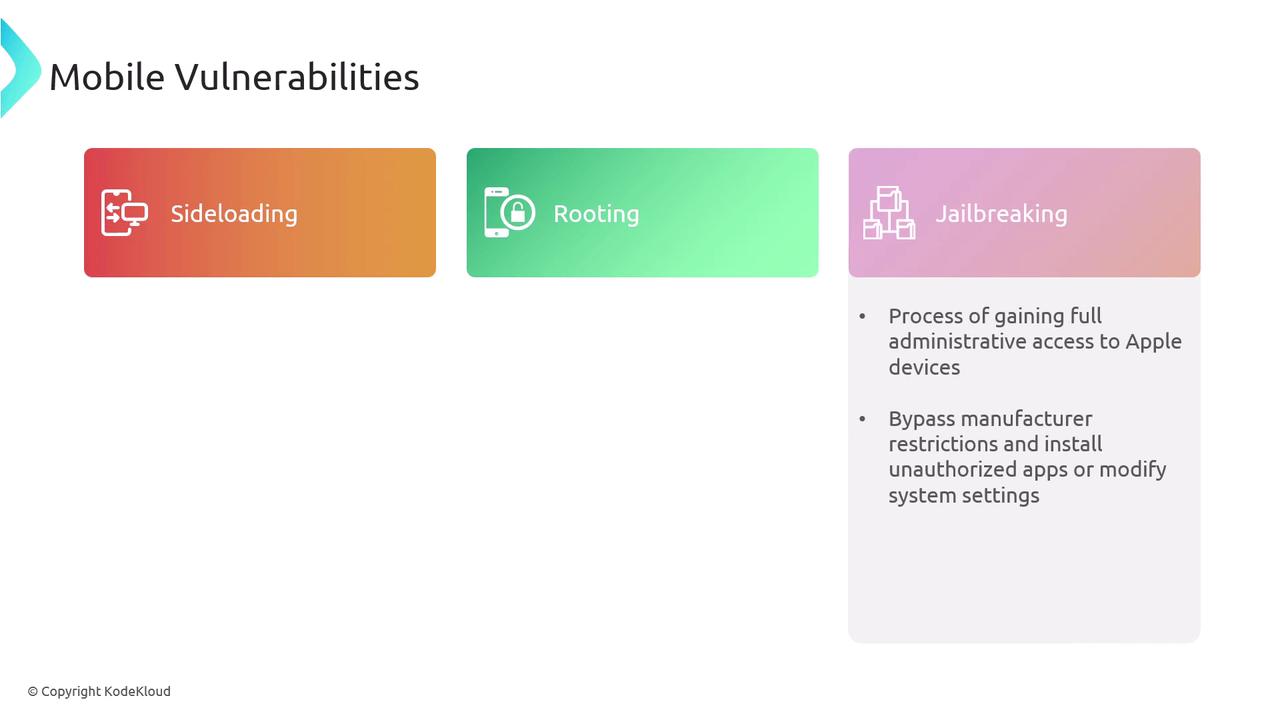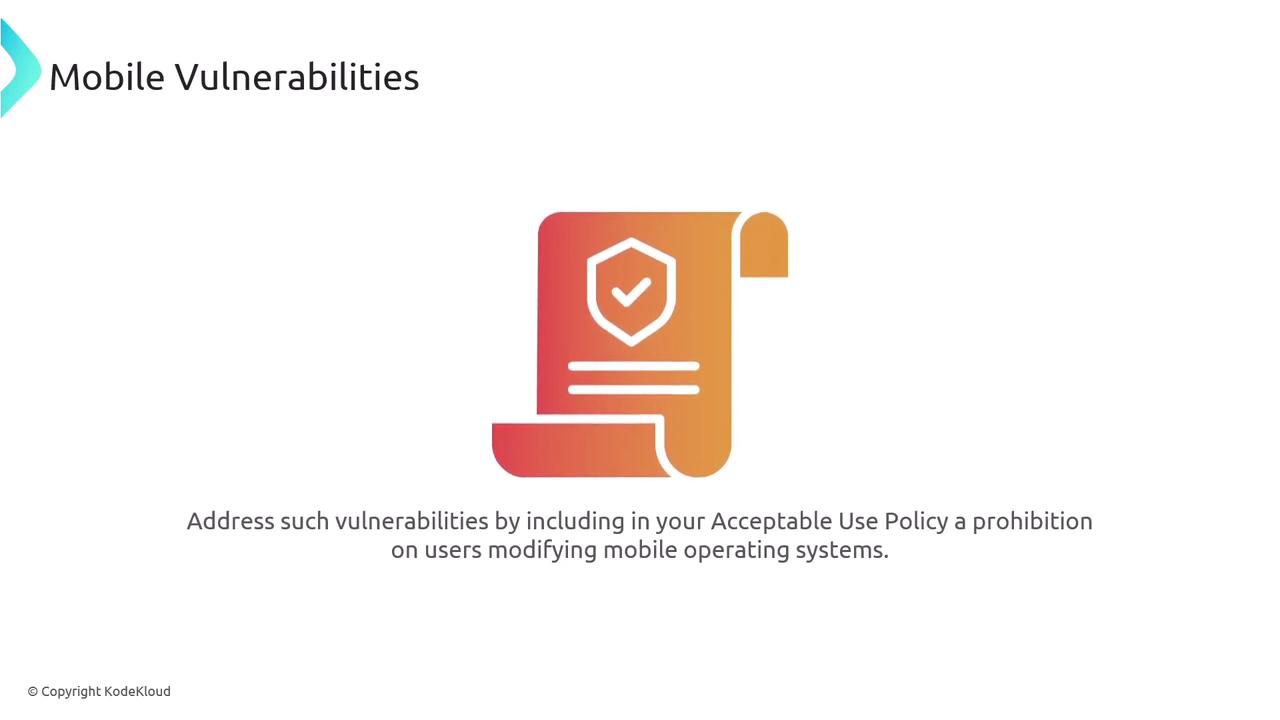CompTIA Security+ Certification
Threats Vulnerabilities and Mitigations
Mobile Vulnerabilities
Mobile devices are an increasingly attractive target for threat actors, especially in environments where bring-your-own-device (BYOD) programs are implemented. Allowing employees to connect personal devices to corporate networks can create significant security risks if these devices are compromised. In this article, we explore three common mobile vulnerabilities—sideloading, rooting, and jailbreaking—and discuss measures to mitigate these risks.
Sideloading
Sideloading occurs when applications are installed from sources outside the official app store. For example, iOS devices should use only the Apple App Store and Android devices should rely on the Google Play Store. Official app stores vet and test applications to help ensure they are free from malicious code. Installing apps from unofficial sources increases the likelihood of introducing malware into your system.

Rooting and Jailbreaking
Rooting (on Android) and jailbreaking (on Apple devices) both involve bypassing the manufacturer’s restrictions to gain full administrative privileges. While these practices might offer users enhanced control, they simultaneously disable critical security measures, leaving the device more vulnerable to attacks.

Strengthening Mobile Security Policies
A robust mobile security policy is essential to protect your organization. One effective strategy is to incorporate explicit requirements in your Acceptable Use Policy (AUP) that prohibit modifications to mobile operating systems. By explicitly banning practices like rooting and jailbreaking, organizations can establish a strong defense against related vulnerabilities.
Policy Tip
Including clear restrictions on modifying mobile operating systems in your Acceptable Use Policy can greatly reduce the risk of unauthorized privilege escalation on corporate networks.

Watch Video
Watch video content